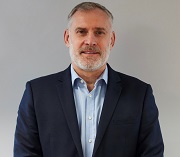In healthcare construction, we were challenged with providing critical care facilities at the height of the pandemic to deal with COVID-19, as well as its longer-lasting impact.
And we have had to be resilient and resourceful to meet these requirements.
On our sites, we had to rethink, revise, and adjust our working practices to maintain productivity while prioritising safety and social distancing measurements.
Finding new solutions to our design approach and operational activities resulted in improved programme periods, reduced costs, and stronger collaboration.
It is important that the innovations and positive changes we made during this time are taken forward to save time, money, and increase safety on future projects
So, after two very difficult years, what have we learnt? And which improvements will we retain and take forward in our operations that will enable us to still save time, money, and increase safety on projects?
Designing for the future
Due to the pandemic, designs for modern healthcare facilities are now more informed by our experiences, with a focus on how they can cope better for the long-term.
This includes a range of new factors, such as designing to accommodate one-way flows, flexible screening, further bed spacing, single rooms, rest and recovery spaces for staff, especially if they are unable to go home in between shifts, and increased hand washing provisions, which is now a fundamental element in healthcare facilities.
The importance of improved ventilation in the designs across all hospital and healthcare environments to help prevent infections spreading is also well known now.
And, in addition, oxygen tank infrastructure, in terms of storage and delivery, will be included in designs – something that wasn’t as much of a priority before the pandemic.
Another key change is the design of waiting areas. If we look at traditional waiting area spaces, in which patients and visitors all sit together, this is no longer fit for purpose.
Looking ahead, designs will need to incorporate flexible waiting spaces with one-way flows, as well as isolation areas.
Operational efficiencies

As an industry that kept going during the pandemic, we were pushed to look for different, and improved, ways of working. This included a focus on offsite construction, which meant that time was spent away from live environments, particularly hospitals or healthcare facilities, which improved safety in lots of aspects.
There is a wide range of elements that can be made offsite, such as prefabricated plantrooms, corridor modules, and even modular rooms.
Taking a more-standardised approach, utilising modern methods of construction, allows increased control of the working environment and can be safer than being on a live construction site.
Finding new solutions to our design approach and our operational activities has served as a catalyst for stronger collaboration, improved programme periods, and reduced costs
Another operational efficiency introduced during this time was the use of lean sequencing, which meant increasing the phasing of the works and handing over in more sections enabling trades to start earlier.
These ways of working offer many benefits and are something that the construction industry will be focusing on more in the years ahead to help ensure safety, time, and cost efficiencies.
Supply chain and community support
With construction remaining open during the UK lockdowns; we felt it was even more important to support local supply chains and generate positive spending and employment in the communities that we work with.
And, despite the urgent and fast-track nature of some of the contracts that we were awarded, such as the Birmingham Nightingale Hospital, our existing relationships with our supply chain meant we were able to mobilise them to join us on emergency projects.
Due to the pandemic, designs for modern healthcare facilities are now more informed by our experiences, with a focus on how they can cope better for the long-term
On this scheme alone, the team managed to engage a supply chain that was 97% from within 30 miles. This approach to social value and supporting local communities is something we are committed to beyond the pandemic.
Finding new solutions to our design approach and our operational activities has served as a catalyst for stronger collaboration, improved programme periods, and reduced costs.
And it is important that the innovations and positive changes we made during this time are taken forward to save time, money, and increase safety on future projects.

